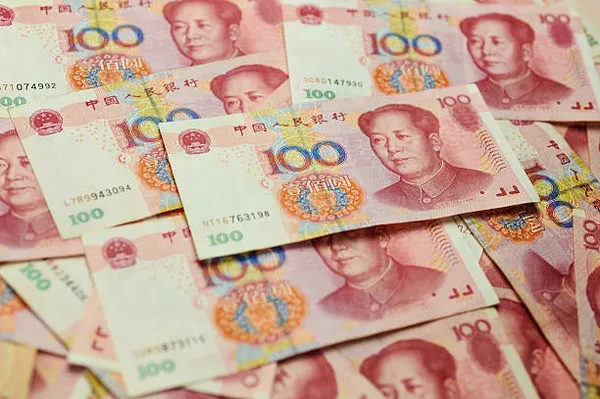The Chinese Yuan (CNY) has been gradually strengthening against major currencies in recent years, sparking curiosity and concern among investors, policymakers, and businesses alike. This article aims to dissect the factors driving this trend, offering insights into the economic, geopolitical, and structural dynamics behind the appreciation of the Chinese currency.
The Chinese Yuan (CNY), also known as the Renminbi (RMB), has been on a trajectory of strength in recent times, garnering attention from economists, policymakers, and investors worldwide. This appreciation of the Yuan against major currencies like the US dollar has significant implications for global trade, investment, and monetary policies. Understanding the reasons behind this strengthening trend is crucial for navigating the complex dynamics of the global economy. In this article, we delve into the key factors driving the strength of the Chinese Yuan.
China’s Economic Recovery:
One of the primary drivers behind the strengthening of the Chinese Yuan is the country’s robust economic recovery following the COVID-19 pandemic. China, being one of the first countries to experience the outbreak, implemented strict containment measures early on, which helped in controlling the spread of the virus. As a result, China’s economy rebounded swiftly, outperforming many other major economies.
The resilience of China’s economy has bolstered investor confidence in the Yuan, as they see it as a safe haven amidst global uncertainties. Stronger economic fundamentals, including robust GDP growth, rising industrial production, and increasing exports, have contributed to the perception of stability and strength in the Chinese currency.
Trade Surplus and Current Account Balance:
China maintains a significant trade surplus with the rest of the world, exporting more goods than it imports. This trade surplus has a direct impact on the demand for the Chinese Yuan, as foreign buyers need to acquire Yuan to pay for Chinese goods and services. Additionally, a trade surplus implies a positive current account balance, which reflects the net flow of goods, services, and investments.
A surplus in the current account indicates that China is exporting more capital than it is importing, leading to an accumulation of foreign reserves denominated in Yuan. This accumulation of reserves strengthens the Yuan by increasing its demand in international markets and enhancing its credibility as a reserve currency.
Monetary Policy and Exchange Rate Management:
The People’s Bank of China (PBOC), China’s central bank, plays a crucial role in managing the exchange rate of the Yuan. While the Yuan is not freely floating like many other major currencies, the PBOC allows it to fluctuate within a managed band against a basket of currencies, with periodic interventions to maintain stability.
In recent years, the PBOC has adopted a more flexible exchange rate regime, allowing market forces to play a greater role in determining the value of the Yuan. This move towards liberalization has been welcomed by international investors and has contributed to the gradual appreciation of the Yuan.
Furthermore, China’s efforts to internationalize the Yuan by promoting its use in global trade and finance have also supported its strength. The inclusion of the Yuan in the International Monetary Fund’s (IMF) Special Drawing Rights (SDR) basket in 2016 was a significant milestone in this regard, enhancing the currency’s credibility and attractiveness on the global stage.
Capital Flows and Foreign Investment:
China has been increasingly opening up its financial markets to foreign investors, allowing greater access to its bond and equity markets. This liberalization has attracted significant inflows of foreign capital into China, as international investors seek to capitalize on the country’s growth prospects and diversify their portfolios.
The influx of foreign investment not only boosts China’s domestic financial markets but also increases the demand for the Yuan, as foreign investors need to convert their currencies into Yuan to invest in Chinese assets. This surge in capital inflows has contributed to the appreciation of the Yuan and is likely to continue driving its strength in the foreseeable future.
Geopolitical Factors and Global Reserves:
Geopolitical developments and shifts in global economic power dynamics also influence the strength of the Chinese Yuan. As tensions between the United States and China persist, some countries are seeking to diversify their foreign exchange reserves away from the US dollar towards other currencies, including the Yuan.
Moreover, China’s Belt and Road Initiative (BRI) and its growing influence in international trade and investment have bolstered the Yuan’s status as a global reserve currency. Countries participating in the BRI are increasingly using the Yuan for trade and investment, further expanding its international footprint and contributing to its appreciation.
Conclusion:
In conclusion, the strengthening of the Chinese Yuan is driven by a confluence of factors, including China’s robust economic recovery, trade surplus, monetary policy, capital flows, and geopolitical developments. As China continues to assert its position as a global economic powerhouse, the Yuan is poised to play an increasingly prominent role in the international monetary system.
Investors and policymakers alike must closely monitor these factors to navigate the evolving landscape of global finance effectively. While the trajectory of the Yuan’s strength may face occasional fluctuations due to external shocks and internal dynamics, its long-term trend towards appreciation underscores the growing significance of China in the global economy.


